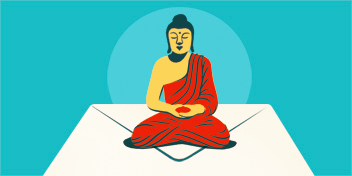For most of its history, the dharma has had little to offer in the domain of social action. But that’s OK.
Like all religions, Buddhism has changed over time. One of the most important changes in recent decades has been the evolution of engaged Buddhism, a movement whose participants apply dharma teachings and meditation practice to social justice, environmental activism, and other causes. This raises a question: As calls for social action resound throughout the land, what resources are provided by the dharma?
I would like to offer two responses to this question. The first is that a survey of Buddhist doctrine and history suggests that, for a variety of reasons, Buddhism has relatively little to offer in the domain of social action, at least as that term is understood today. For most of its existence, Buddhism has in many ways been more concerned with the future than the present, more about the next world than this one. The second response is that that’s OK.
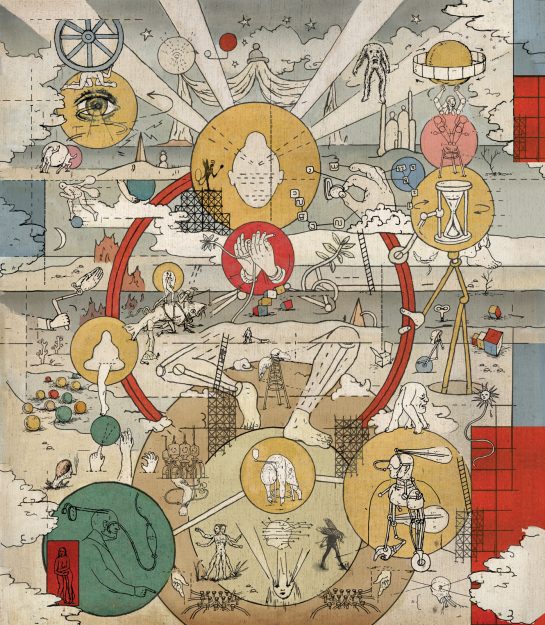
Acentral element of Buddhist claims to legitimation in ancient India was the assertion that Shakyamuni was not unique, that there had been many buddhas in the past, whose names he knew and whom he had encountered in his previous lives on the bodhisattva path. Their teachings had been entirely forgotten, however, making it necessary for a new buddha—in our age, Shakyamuni Buddha—to restore the salvific dharma to the world. Yet like those of all buddhas, the teaching of Shakyamuni will suffer the fate of impermanent things, fading away over time until it is entirely forgotten. How long this will take and how it will happen have been matters of great interest to Buddhist thinkers in the centuries after his passing, and a variety of chronologies have been set forth. One of the earliest predictions of this demise of the dharma appears in the traditional account of the Buddha’s grudging decision to admit women into the monastic order. He says that had he not admitted women, his teaching would last for a thousand years but because he has done so, it will only last for five hundred.
A more detailed description, one that was important especially in East Asia, posited three periods: the true dharma, the semblance of the true dharma, and the demise of the true dharma. The first is the period following the passage of the Buddha into nirvana, when his teachings are properly maintained and it is possible to follow the path to liberation. During the second, the teachings remain extant but progress on the path is more difficult. In the final period, the practice of the path eventually becomes impossible.
In Buddhism, the world, a world that is the product of our collective karma, passes through various cosmic stages. The current stage, called the stage of abiding, also passes through cycles, in which both the lifespan and the qualities of humans rise and fall. At present, we are on a downward slope, with the human lifespan decreasing and eventually dropping to ten years, after which it will rise again until it reaches 80,000 years. It is then that Maitreya will come. During this period of decline, not only will the conditions of the world deteriorate but the dharma will disappear.
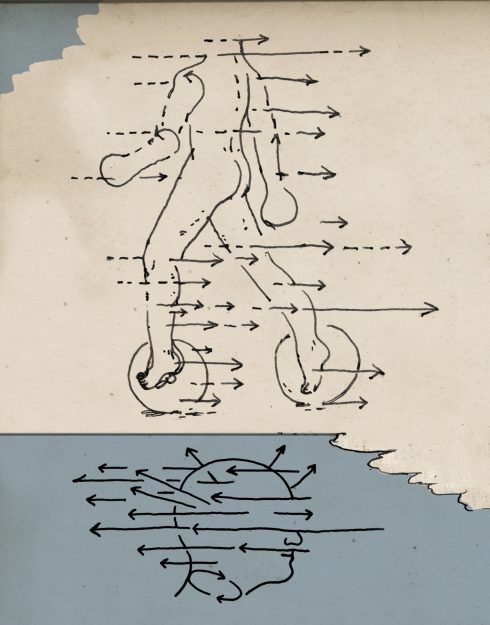
This decline is attributed to what are called the “five degradations”: (1) the degradation of the life span, because the human life span decreases; (2) the degradation of views, because wrong views become rampant; (3) the degradation of afflictions, because negative emotions become stronger; (4) the degradation of sentient beings, because both their physical and mental powers weaken; and (5) the degradation of the eon, because the physical environment deteriorates. (We might pause to consider whether all five are present in our world in the year 2021.) It was, of course, essential to be able to calculate exactly when each of the periods began and ended. Most importantly, has the final period already begun— are we already in it? As one might expect, all manner of calculations have been made. In medieval Japan it was concluded that the final period had begun in 1052.
During this period of decline, chances for redemption, whether for ourselves or for our world, are futile. Such a belief inspires practices that allow us to await better times or take us elsewhere. Thus in Myanmar there are those who seek to become weizza, often translated as “wizards,” by engaging in longevity practices to extend their lifespan until the coming of Maitreya. In China and Japan, the doctrine of decline led to the rise of the Pure Land schools, which teach that through the grace of Amitabha, the buddha of infinite light, we are reborn in his buddha field of Sukhavati and from there achieve buddhahood. And in late Indian Buddhism we find millenarianism in the Kalachakra Tantra, composed sometime between 1025 and 1040 in the wake of Muslim raids into north India. The text predicts an apocalyptic war in which the army of the good will sweep out of the kingdom of Shambhala, deep in the Himalayas, to defeat the barbarians and restore the dharma, a war that will not occur until the year 2425.
In Buddhism, therefore, we live in a world of samsara, a world that is by its very nature marked with suffering, impermanence, and no self, a world that is in irreversible decline, a world that is irredeemable. Tibetans translate the Sanskrit term loka, “world,” as “disintegrating foundation.” And so, in any of the texts known as lamrim (“stages of the path”) or ngondro (“preliminary practices”), we find some version of the “four things to turn the mind away from the world”: contemplations of the rarity of human birth, the inevitability of death, the faults of the six realms of samsara, and the inexorability of karma. We should come to think of life as like a prison from which we must escape, with all the urgency of a person whose hair is on fire. These texts say little about trying to repair the disintegrating foundation.
Buddhism has in many ways been more concerned with the future than the present, more about the next world than this one.
But what about the brahma-viharas? When people speak of the social commitment of Buddhism, they often mention these “divine abodes”: love, compassion, joy, and equanimity. As four of the forty topics set forth by the Buddha to develop concentration, they are meant to be cultivated on the meditation cushion and not in the marketplace. And in their original articulation, equanimity is the highest of the four, present in the fourth level of concentration, the level most highly praised, and the state from which the Buddha himself entered nirvana. When we read what the 5th-century Indian scholar Buddhaghosa says about equanimity in his important work The Path of Purification, we see that it is essentially the concession that each of us is subject to our own karma and there is no particular benefit in being troubled by the fate of others. As he writes, “Beings are owners of their deeds. Whose [if not theirs] is the choice by which they will become happy, or will get free from suffering, or will not fall away from the success they have reached?” In other words, we’re on our own. It is interesting to note that in Tibetan lamrim texts the order is reversed, with equanimity coming first, described as a prerequisite for compassion. Which brings us to the Mahayana.
So what about compassion? What about the bodhisattva? What about dana, giving, the highest Buddhist virtue, the first of the six perfections? The most famous stories of giving in the Buddhist canon occur in the Jataka stories, the accounts of the Buddha’s past lives as a bodhisattva. We notice here that cases of giving are often of a spectacular, and sometimes gruesome, nature. A prince commits suicide by jumping off a cliff to feed a starving tigress and her cubs; a king methodically carves off his own flesh to save a dove from a hawk. In one of the rare cases in which the bodhisattva is a woman, she cuts off her breasts to feed a starving woman so that the woman can nurse her starving child. In perhaps the most heartbreaking scene in Buddhist literature, Prince Vessantara gives his darling children to an evil brahmin to serve as slaves. Thankfully, none of these cases of giving are real-world examples.
And perhaps they are not supposed to be. For we read in Shantideva’s Engaging in the Bodhisattva Deeds (8th century) that the perfection of giving actually has nothing to do with the alleviation of poverty. As he writes: “If the perfection of giving meant the dispelling of the world’s poverty, then how did the previous buddhas perfect it, since beggars still abound?” In other words, the Buddha perfected giving and yet there is still poverty in the world. The perfection of giving therefore cannot mean the alleviation of poverty. As he goes on to explain, the perfection of giving is instead the intention, the willingness to give everything to everyone. Therefore, the perfection of giving is an attitude. In Sanskrit it is described as cittam eva, “just a thought.”
But what about the bodhisattva vow? It is a term that we should think of in the plural. In the Tibetan tradition we find 18 root vows and 46 secondary vows. (In keeping with the model of the monastic code, these are presented in the form of infractions, thus as 18 root infractions and 46 secondary infractions.) If social action is to be found in the Mahayana, it likely will be found here. And it is, often in fascinating forms. Still, we find a reference to charity in only one—in fact, only half of one—of the 18 root infractions, “not giving the dharma or wealth.” That is, it is an infraction of the bodhisattva vow not to provide the teaching of the dharma or one’s material possessions to those who request it.
We need to dig deeper, moving to the secondary infractions to find more. Here we find the initially shocking statement that it is an infraction of the bodhisattva vows not to kill, not to steal, not to engage in sexual misconduct, not to lie, not to speak divisively, not to speak harshly, and not to speak senselessly in order to benefit others. This secondary vow, particularly the requirement that the bodhisattva kill, steal, and lie for the benefit of others, raises a host of ethical issues pertinent to our question.
As we move through the 46 secondary infractions, we find that it is an infraction for a bodhisattva not to help those in need, not to help the sick, not to alleviate suffering, not to console the bereaved, not to help the poor, not to stop those engaged in harmful deeds, and, if you have magical powers, not to use them for the benefit of others. Several of these are elaborated by the 4th-century Indian scholar Asanga in a moving passage:
Furthermore, the bodhisattva attends the suffering. He nurses sentient beings beset by sickness. He leads the blind and shows them the way. He causes the deaf to understand using sign language by teaching them the symbols for words. Those without arms or legs he carries himself or transports them by a conveyance….
Furthermore, the bodhisattva protects sentient beings from fear. He protects sentient beings from fear of being harmed by beasts of prey. He protects them from fear of whirlpools and sea monsters, from fear of kings, from fear of robbers and thieves, from fear of foreign enemies, from fear of masters and lords, from fear of being without livelihood, from fear of insult, from fear of being timid in public, from fear of nonhumans, and from fear of vampires. . . .
Furthermore, the bodhisattva takes away the grief of sentient beings who have suffered misfortune, beginning with misfortunes involving relatives and friends. That is, he takes away the grief at the death of parents. He takes away the grief at the death of a child or spouse, a male or female servant, an assistant or employee. [He takes away the grief upon] the death of a friend, a confidant, a kinsman, or a relative. [He takes away the grief at] the death of such people as masters, abbots, and teachers. . . .
Furthermore, the bodhisattva provides necessities for those who want necessities. He gives food to those who want food. He gives drink to those who want drink, transportation to those who want transportation, clothing to those who want clothing, ornaments to those who want ornaments, vessels to those who want vessels, perfumes, flower garlands, and creams to those who want perfumes, flower garlands, and creams, a place to stay for those who need a place to stay, and light for those who need light.
This passage, as inspiring as it is, portrays the bodhisattva as a cosmic social worker (with a sideline in cosmetics). It does not portray the bodhisattva as a political organizer. And again, we do not find significant evidence in the premodern period of acts of charity performed by Buddhist monastics. Where real giving, in the real world, becomes important in Buddhism, it is not giving to the lay community; it is giving to the monastic community.
It is difficult to say much with certainty about the period of the Buddha’s lifetime; scholars continue to debate about his exact dates. It seems clear, however, that what we call Buddhism began as one of a number of ascetic movements that arose in northern India some five centuries before the Common Era. The phrase that occurs again and again in the sutras in reference to monks and nuns is “gone forth into the homeless life.” The term translated as “home” here carries all the connotations of domesticity, including property, profession, and family, and the responsibilities that they entail. Buddhist monks and nuns were supposed to leave that behind, with the monastic code preventing them from owning property, engaging in a profession, tilling the soil, and even touching money. We may recall that the words for “monk” and “nun,” bhikshu and bhikshuni, literally mean “beggar.” And as we know, beggars can’t be choosers. The sangha therefore depended upon the laity for sustenance and was subject to the laws of the king.
Where real giving, in the real world, becomes important in Buddhism, it is giving not to the lay community but to monastics.
The relation between sangha and state seems to have been important from the beginning, with kings figuring prominently in the sutras as friends and patrons of the Buddha. And we note that Buddhist monks often served as advisors to kings, even composing texts on the topic, such as Nagarjuna’s Precious Garland of Advice for a King. We can note here, however, that part of the advice offered by these advisors (who were often Buddhist monks) was the importance of supporting the sangha.
This is because as the sangha grew in size and became sedentary, it was increasingly difficult for local communities to provide food for the monks and nuns, making royal patronage all the more necessary. The sangha therefore came to protect the interests of the state, and it did so in a number of ways. Thus, in the interview that must precede the ordination of a monk the candidate is asked whether he is a soldier, a criminal, or in debt, ensuring that the sangha did not become a refuge for those seeking to escape from the rule of law. (We should note that ordination also included a physical examination for a lengthy list of physical and mental maladies that would prevent ordination. Despite the association we often make between monasticism and medicine, the monastery was not regarded as a place for the treatment of the sick.)
In order for the monastery to survive, conforming to the laws of the state was not enough. The sangha had to contribute to its survival. It did so through the economy of karma. We know from a variety of sources that in the early tradition, laypeople were not instructed in meditation. This remained the case for centuries. Instead, the laity was taught the virtue of dana, giving, with karma theory specifying that the recipient of the gift figured in the calculation: the purer the recipient, the greater the good karma, with purity often measured by maintenance of the vow of celibacy. The Buddha also taught that the karmic effect of generosity is wealth in the future, especially the marvelous wealth of the six Buddhist heavens of the Realm of Desire.
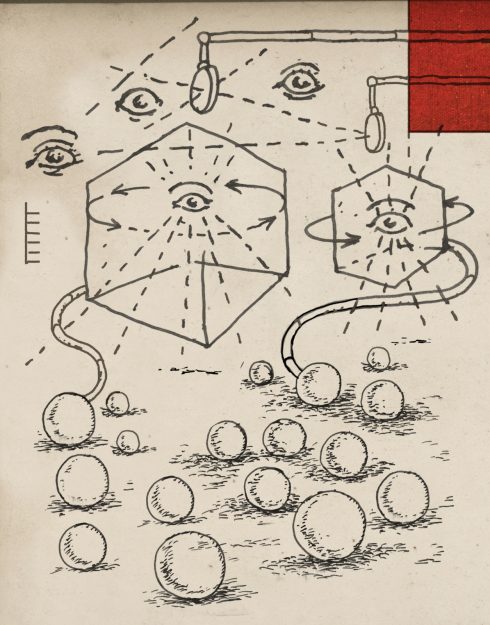
The most important service that Buddhist monks could provide to the laity, therefore, was teaching them not how to meditate but how to enter into a transaction in which material gifts in this life were converted into heavenly riches in the next. And this power to convert currency seems to reside only with the sangha. So exclusive is its power that even Maudgalyayana, the monk renowned for his magical powers, was unable to feed his own mother after she was reborn as a ghost. The Buddha informed him that the only way to feed the dead is to feed the sangha.
We can see, then, that the sangha advised the laity, almost in the words of the Gospel of Matthew: “Lay not up for yourselves treasures upon earth, where moth and rust doth corrupt, and where thieves break through and steal. / But lay up for yourselves treasures in heaven, where neither moth nor rust doth corrupt, and where thieves do not break through nor steal” (6:19-20). It is doctrines like these that made the Roman Catholic Church and the Buddhist sangha among the wealthiest institutions in world history. (We know, for example, that the economy of Tibet collapsed in the 1960s in the wake of the Chinese invasion because Buddhist monasteries were the banking system of the nation.)
Buddhist texts explain that kings who supported the sangha would reap a further benefit beyond that offered to the common people: protection from natural disaster and from foreign invasion. In Chinese we even find the term huguo fojiao, “state protection Buddhism,” referring to Indian texts such as the Lotus Sutra and the Sutra of Golden Light as well as to apocryphal sutras such as the Sutra for Humane Kings, which promise protections to kings who promote the sutra’s teachings. When the monk Eisai sought permission to introduce Zen Buddhism into Japan in 1198, the petition that he penned to the shogun was not about Bodhidharma coming from the west; it was entitled Kozen Gokokuron,“Treatise on the Promotion of Zen for Defense of the State.” In both the Russo-Japanese War of 1904 and World War II, many Japanese monks fully supported the Japanese war effort. This included the famous Rinzai master Shaku Soen, remembered today as the teacher of D. T. Suzuki. During the Russo-Japanese War, Tolstoy wrote to Shaku Soen, asking that the master join him in condemning the war between their two countries. Shaku Soen declined.
In a certain sense, then, Buddhist monks and nuns across the world have been civil servants, providing a service to the state in return for their protection and sustenance. However, dynasties rise and fall, and not all kings have been patrons of Buddhism. When we look at the history of Buddhism in India, China, Korea, and Japan, we see the devastating effect that the withdrawal of royal patronage has had on the sangha. Long before the arrival of the Muslims, Chinese pilgrims to India encountered many monasteries deserted and in ruins because the local king was now a Hindu or the trade route had shifted. At the beginning of the 20th century, Buddhist monks and nuns were not allowed within the city walls of Seoul. It was in countries that had a relatively stable reign of Buddhist kings, places like Tibet and Thailand, that the sangha thrived. In Tibetan history, there is no figure more evil than Lang Darma, who was literally demonized for his attempts to prevent extravagant support of the sangha from bankrupting the country. According to a famous story he was assassinated by a Buddhist monk, who is remembered as a hero.
Indeed, when we look at the history of Buddhism, we see that Buddhist monks and nuns most often take what we term social action against those whom they perceive to be enemies of the dharma. Perhaps the most famous act of political protest by a Buddhist in modern history, the self-immolation of Thich Quang Duc in Saigon in 1963, was against the government of the Diem family, who were Roman Catholics and were perceived as persecutors of Buddhism. In Tibet, many monks took up arms against the British during the Younghusband invasion of 1904 and against the Chinese during the Litang uprising in 1956 and the battle of Lhasa in 1959, all in defense of the dharma.
Are we forced to conclude that what makes Buddhism so strong at the personal level is what makes it weak at the political level? If we’re talking about Buddhism in the real world, how real is that world?
Among the questions we might ponder is this: When we think of social problems, does Buddhism have more to offer in diagnosis than it does in cure? And if that is the case, why? We might begin with karma, which is presented as a natural law of cause and effect, a law that explains everything that happens to us, good or bad. What, then, does it mean to intervene in the playing out of the karmic events that create our world, and is that intervention itself karmically ordained? Is it the case that perennial questions of the choice between justice and mercy that haunt the theologies of Judaism, Christianity, and Islam are also present in Buddhism? Are we forced to conclude that what makes Buddhism so strong at the personal level is what makes it weak at the political level?
Or to put it another way, if we’re talking about Buddhism in the real world, how real is that world? Ultimately, we make decisions about the world based on our understanding of the truth. The philosophical category most germane to our topic here is pramana—valid knowledge. This is a central question in Indian philosophy: How many sources of valid knowledge about the world are available to us? Some of the Hindu schools listed as many as six, including “speech,” which includes the Vedas and the testimony of the truthful. But the Buddhists, in a turn toward empiricism, radically limited the forms of valid knowledge to just two: direct perception and inference. Yet Buddhist thinkers acknowledge that even these two forms of valid knowledge have problems, with much written about what it means to be valid and precisely how mistaken a consciousness can be and still be considered a valid form of knowledge.
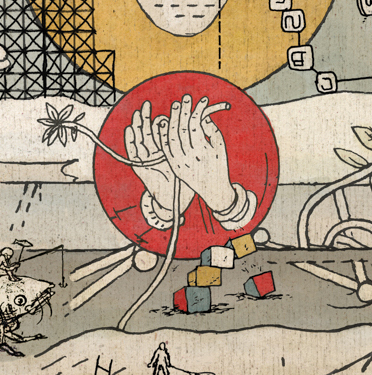
The fact that even valid direct perception is in some sense invalid has been disquieting to Buddhist thinkers for centuries, extending to the 20th century. In his controversial work Adornment for Nagarjuna’s Thought, Gendun Chopel concludes that what we call conventional valid knowledge is in fact little more than the opinion of the majority.
To illustrate this, he cites a story told by the great 7th-century Madhyamaka philosopher Chandrakirti. It’s a story about a king whose astrologer warns him that a terrible rainstorm is approaching and anyone who drinks the rainwater will go mad. The king has all the wells and cisterns in the palace covered, but there is no time to warn the people, who drink the water and go insane. Soon the people storm the palace, denouncing the king as a madman.
As Gendun Chopel writes, “In the end, not knowing what else to do, the king drank the water, and came to agree with everyone else.” This is a chilling story in ancient India, all the more chilling in 21st-century America, where so many of us have been tempted to taste the waters of madness.
And so from the Buddhist perspective, the near future is grim. But in the distant future there will occur what is called the nirvana of the relics. At the same precise moment all around the world, all of the stupas and pagodas will explode, releasing their relics. The relics will fly to Bodhgaya, where they will reassemble under the Bodhi tree to be worshipped by the gods one last time. The relics will then burst into flame and disappear. This is the sign that the advent of Maitreya is nigh. Perhaps we should build that statue.
And if we build that statue in America, we should engrave these words on its base, the words of the American poet and bodhisattva Gary Snyder: “The mercy of the West has been social revolution; the mercy of the East has been individual insight into the basic self/void. We need both.”
♦
The passage from Indian scholar Asanga, drawn from Asanga’s Bodhisattvabhumi, appears in Donald S. Lopez Jr.’s “Sanctification on the Bodhisattva Path” in Sainthood: Its Manifestations in World Religions, edited by Richard Kieckhefer and George D. Bond.
